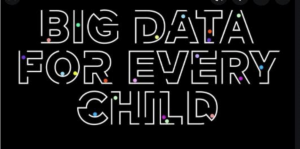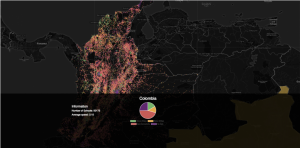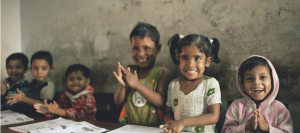
Hi everyone, welcome to the first week of this blog.
In this short post I am going to talk about how big data can be used to reduce human suffering by predicting the disaster’s trends. Unfortunately, people rarely thinking about big data when it comes to news of humanitarian crises in the world. However, humanitarian actors have done a lot of things using big data, and ICT to guide humanitarian efforts and reduce human suffering.
UNICEF is a leading NGO in the field of big data for development. For instance, UNICEF introduced Magic Box which is a collaborative platform that is made possible by UNICEF through the contributions of private sector partners such as Telefonica, Google, IBM, Amadeus, and Red Hat.
How is the Magic Box magic? Well! It’s quite easy. If the suitable data are in the suitable hand with the suitable fund and capacity, we can make the difference. Therefore, Magic Box consists of several applications that UNICEF connected to the development of humanitarian interventions to:
- Mapping every school in the world and show their connectivity
- Using human mobility data to create a risk map for the spread of the disease;
- Analysing social indicators: using data to understand indicators like household poverty
- Evaluating the human impact of natural disasters: through computational approaches to evaluate the impact of natural disasters.

Therfore, the burning question is, of course, how epidemic forecasting can support UNICEF’s fight against infectious diseases?

Let me share with you this quote from UNICEF about how big data contributed to reducing the suffering of children:
“Nowadays, this is possible thanks to the huge amount of data that each of us generates using portable technology. Every time we make a phone call or post a picture on Instagram, we are recording our location. If today someone makes a call from Bogotá, and tomorrow a call from Cali, the phone company knows that one person has traveled from one city to the other. Aggregating this information across many users, telephone companies can provide UNICEF and other stakeholders with anonymized data on human mobility patterns across an entire country in real-time.”
One of the inspirational practices of big data for development is Colombia’s ZIKA response. To achieve this, UNICEF employs unconventional approaches. Although the scientific community is still divided, the use of unconventional data sources (human mobility data, social media traces, web searches) to represent biological processes and to enhance the realism of assumptions about disease spread in forecasts prove to be successful. More
Additionally, if we can estimate where people from affected areas move, we can then use mathematical and computational models to forecast where pathogens are likely to spread next and plan surveillance and prevention efforts accordingly.
The big data revolution is no longer restricted to the industrialized world. The spread of mobile phone into the hands of billions of individuals provides a lot of potentials to develop humanitarian decisions.

